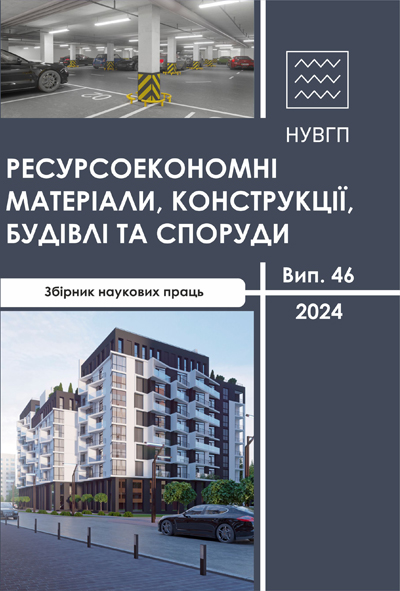STUDY OF CRACK FORMATION PROCESSES IN REINFORCED CONCRETE ARCHES MADE OF HIGH-STRENGTH CONCRETE UNDER SHORT-TERM STATIC SINGLE LOADS
DOI:
https://doi.org/10.31713/budres.v0i46.24Abstract
he use of high-strength concrete can significantly reduce the volume of concrete, and thus the dead weight of structures, and reduce the consumption of reinforcing steel in reinforced concrete structures. The strength of heavyweight concrete can reach 80-150 MPa, and design standards for structures made of such concrete in Ukraine are currently under development. The deformation patterns under short-term static and dynamic loading of high-strength concrete have not yet been studied sufficiently, which complicates the calculation of reinforced concrete structures made of such concrete, especially at high load levels, and is a deterrent to their wider use in modern construction. Based on the foregoing, there is a need to study the stress-strain state of reinforced concrete arches made of high-strength concrete under the action of static single and repeated loads of different levels and to determine in-depth the physical, mechanical, and deformation characteristics of high-strength concrete. This will make it possible to more accurately assess the stress-strain state of elements of reinforced concrete structures made of such concrete, improve design reliability, and obtain a significant economic effect in the construction of buildings and structures, which is an urgent task of today. The paper describes the operation of double-jointed reinforced concrete arches made of high-strength quick-setting concrete.
The peculiarities of the stress-strain state of the belt sections and the nature of crack development under single short-term static loads were investigated. For the prototypes of arches, diagrams of the dependence of the crack opening width and the number of cracks in the arch belt on the loads were constructed. The design of the prototypes and the process of their manufacture are described. The test methodology for the prototype arches is described, test schemes with the placement of measuring devices and their loading modes are shown.

